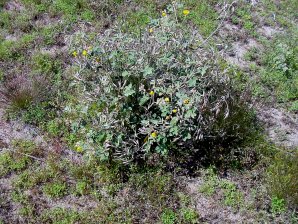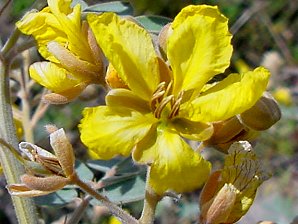Arizona Wild Flowers
Pictures, Photos, Images
Descriptions, Information, Reviews.
Desert Senna, Cassia covesii, Senna polyantha.
We Are Proud Of Our SafeSurf Rating!
Click On Any Of The Following Links By Amazon.Com
For Books, & Videos About Wildflowers Of Arizona & The Southwest USA. No Obligation!
 |
| Desert Senna, Cassia covesii or Senna covesii |
|---|
 |  |
| Senna, Cassia covesii. | Senna, Cassia covesii. |
|---|---|
 |  |
| Senna, Cassia covesii. | Senna, Cassia covesii. |
 /
/

Desert Senna.
We wish to thank Wikipedia, the free encyclopedia for some of the information on this page. We share images and information with Wikipedia. A bushy perennial covered with fine white hairs reproducing by seeds only. The stems are 1 to 2 feet high, branching from a woody base. The grayish green leaves are 1 to 2 inches long, including the stalks. They are divided into 2 to 4 pairs of large oblong, point tipped leaflets, 1/3 to 1 1/4 inches long. The flowers are in several to many stalked clusters at the top of the stems, and in the leaf axils. They have 5 large yellow petals about 1/2 inch long, with reddish veins, and 10 stamens with large orange anthers. The slightly curved pods, 3/4 to 1 1/3 inches long, are tipped by a stiff point about 1/8 inch long. They pop open with force when mature, throwing the seeds some distance from the plant. The pinkish brown seeds are pearshaped, deeply wrinkled, and flattened, about l/8 inch long. An important food source to catipillars, which helps in the spread of native butterflies. Desert senna is a very common native plant of dry disturbed soil throughout Arizona, which is found along roadsides and waste places; also on rocky slopes, mesas, sandy river bottoms, and washes in the deserts, and desert grassland ranges; from about 1,000 to 3,500 feet elevation; flowering from March through October. The 1 inch wide flowers have 5 petals and are followed by long, fuzzy, brown seed pods that become woody and twisted when dry. The dull green leaves are pinnate with 2 to 3 pairs of elliptical leaflets. The stems are tan and fuzzy. Not to be confused with Two leaf Desert Senna, Cassia bauhinioides, which looks almost exactly like desert senna, except the leaves are divided into just 2 leaflets (1 pair), and there are only 2 flowers in each stalked axillary cluster, with no flowers borne at the tip of the stems.
Quick Notes:
Height: Up To About 24" Tall.
Flowers: Yellow, 5 large yellow petals about 1/2 inch long, with red - brown veins, 10 stamens with large orange anthers.
Flowering Time: March - October.
Fruit: Slightly curved pods, 3/4 to 1 1/3 inches long, are tipped by a stiff point about 1/8 inch long.
Leaves: Dull green pinnate leaves with 2 to 3 pairs of elliptical leaflets.
Found: Native to the Mojave Desert, and Sonoran Desert; in southeastern California, southern Nevada, and Arizona of the United States. Also native of northern Baja California in Mexico. Found throughout lower elevations in Arizona.
Hardiness:
Soil pH requirements:
Sun Exposure:
Elevation: 800 - 3,500 Feet.
Habitat: Cities along roadsides and waste places; also on rocky slopes, mesas, sandy river bottoms, and washes in the deserts, and desert grassland ranges. An ideal xeriscape landscape plant in Arizona.
Miscellaneous: Flowering Photos Taken April 18, 2004. This same plant is known by about seven other scientific names. Not carried by most nurserys. Useful in xeriscape landscaping.
|
We Are Proud Of Our SafeSurf Rating!



We Are Proud Of Our SafeSurf Rating!
Click On Any Of The Following Links By Amazon.Com
For Books, & Videos About Xerioscape Plants Of Arizona & The Southwest USA. No Obligation!
Back To Arizona Wild Flowers Home Page.
Back To Arizona Wild Flowers, Yellow Flowers Page One.
Back To Arizona Xeriscape Landscaping Main Page.
Back To Xeriscape Perennials Page One.
Back To DeLange Home Page
© 1966 - Present, Audrey, Eve, & George DeLange
| © 1966 - Present, Audrey, Eve, & George DeLange |


